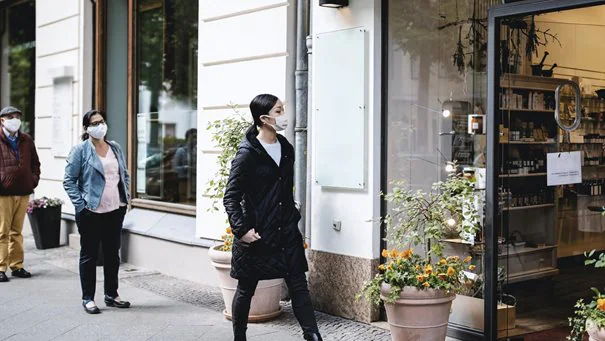
How To Turn Private Labels Into Powerhouse Brands
presently private label brands or store brands are enjoying their moment. at the start of covid 19, there became a shortage of many consumer-packed goods and they disappeared from the store because of their high rate as well as high pantry failing to fill the shelves of stores. Some shoppers who couldn’t find their favorite brands bought private-label goods instead — and continue to do so. The fact that private labels are often cheaper than national brands has also helped cash-strapped consumers tighten their wallets. These two advantages – high availability and low price – have made private-label products much more attractive to consumers during the COVID-19 pandemic.
Consumers’ shift towards private labels also benefits retailers, as private labels are typically more profitable for them. In addition, high-quality private labels can gain a loyal following and become a powerful driver of customer loyalty to the retailer. But will this private label boom be short-lived? Are retailers at risk shortly of disappointing first-time buyers of private-label products with a poorly thought-out offering? And once the COVID-19 crisis subsides, will most consumers abandon store brands and go back to buying their preferred brands? In our view, unless retailers step up their private label game, the answer to each of these questions will almost certainly be yes. In this article, we will share some tips for private label brands, which can help them to become powerhouse brands.
History of Private Label Brands:
Private-label products are not new to the retail scene. The great Atlantic & Pacific Tea Company (A&P) was built in part on its freshly ground (in-store) 8 O’Clock Coffee in the early 1900s. Sears-Roebuck’s growth was driven in part by a strategy of buying and developing its brands (Craftsman, Kenmore, etc.), which remain key American brand institutions. In Europe, Migros, Aldi, and Tesco have built successful retail empires based entirely on the development and distribution of their brands. then Private label products emerged prominently in the 1980s. And now COVID-19 crisis helped private label manufacturers greatly.
consumer surveys show that nearly 40 percent of American consumers have tried new products or brands since the outbreak of the COVID-19 epidemic. Much of the switching behavior was driven by availability issues — some brand-name products were out of stock for weeks as manufacturers of national brands struggled to meet the sudden surge in demand.
How To Turn Private Brands Into Powerhouse Brands:
Private-label brands can be made powerhouse brands Only if retailers develop a compelling private-label strategy and operating model. Following are some points by following which Private label manufacturers can bring their good fate to home.
- Achieving Customer Loyalty
While some retailers have introduced new products and private label brands over the years, only a few of them carefully thought about the role of private labels in their business. Some private brands and products arise simply because of gaining profit, for example, a retailer offers to manufacture a product at a lower price and higher margin than a national brand. The seller agrees – but does not carefully define the value proposition of this new product or the product’s role in the assortment. while some retailers make a thorough research for improving their private labels and gaining loyalty.
- Conduct a Gap Assessment and detailed Diagnosis
Once a high-level assessment is made, a retailer can look deeper into five areas—namely, brand strategy, assortment and pricing, marketing and packaging, product design and sourcing, and organizational and operating model and develop an action. plan in each. development of clear standards and guidelines is equally important for retailers. By communicating and reinforcing these guardrails, a retailer can equip their brand and category teams to consistently bring the value proposition to life at every customer touchpoint.
- Role of Centralized Label Team:
Private label brands can work better by establishing a centralized label team. This team can make them adopt different measures for reducing the gap between consumers and retailers. Furthermore, it can tell when promotion offers should be made from time to time for gaining customer loyalty.
- Communication, marketing, and packaging:
Although private labels have traditionally relied on price and shelf placement to drive purchase, leading retailers have recently been using cost-effective channels to communicate the story behind their store brands – such as how they source ingredients or where products are made. Sophisticated retailers in particular track key purchase drivers at the category level and ensure a fair share is present. For example, one retailer blogs about its private-label baby products on popular parenting websites and forums; another seeks quality certification from leading independent product testing bodies. These and other actions help close the quality perception gap that many private labels face.
Leading retailers are now developing brand language on their packaging that not only captures shoppers’ attention but also communicates the brand’s functional benefits. Packaging is also becoming more important for conveying the value proposition of private labels. In the past, private label packaging tended to resemble the look and feel of national brand equivalents. Leading retailers.
- Pricing:
Historically, retailers have not sold their private labels much. Customers’ impressions of many private labels are largely influenced by what they see on store shelves – and that’s where many retailers fail to make a big impression. Establishing and regularly enforcing price differentials is particularly important for private label products, many of which attract consumers precisely because of perceived value. Ideally, retailers would systematically compare the price of each private label against internal and competitive benchmarks.
The increase in private-label sales is good news for retailers. Will consumers stick with private labels after the pandemic? The answer isn’t crystal clear yet – but retailers can certainly influence the outcome. For those retailers who set bold ambitions and move quickly to fill any capability gaps, they can make their private labels soon as powerhouse brands.







